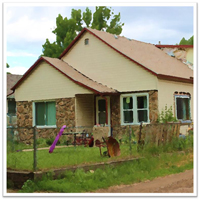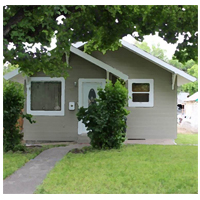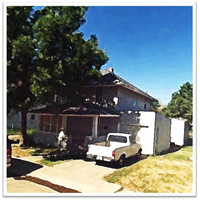Havre
In the aftermath of the Great Sioux War of 1876-77, the U.S. Military established forts throughout the Northern Plains to protect its interests. Among these was Fort Assiniboine, established near the Milk River in north-central Montana in 1879. Fort Assiniboine attracted a large number of traders, which in turn formed the small town of Bull Hook Bottoms, later called Havre. The town grew after 1890 with the arrival of James J. Hill’s Great Northern Railroad. The railroad spurred settlement of Montana’s Hi-line. A year later, in 1891, the African American 10th Cavalry were stationed at Fort. These troops occupied the fort from 1891 until the beginning of the Spanish American War in 1898. In Havre, many of these soldiers found a small but established African American community.
The influx of African American soldiers, together with the employment opportunities afforded by the railroad, led to the establishment of a small African American community in Havre. As in several other Montana towns, the black residents established an African Methodist Episcopal (AME) church which hosted benevolent societies and fraternal organizations. In Havre, the AME church was located at the Corner of 3rd Street and 6th Avenue. In addition to serving as a place of worship, the church hosted clubs and events for the community.
According to the census, in 1910 most of 31 African Americans living in Havre worked for the railroad or in service industries. Only Alice Pleasant, (“Ma Plas’) owned her own business, the Home Café on First Street. Alice lived with her son and daughter, and other families included the Allsups, Conleys, Cottoms, and Johnsons. Twenty years later, while Havre’s overall black population remained steady at 35 individuals, most of the original families and children had moved on. As in other Montana communities out-migration trends began with the drought in 1917 and continued into the 1930s and 40s. With the onset of WWI and Great Depression many Montanans, including the African American residents, moved farther west in search of jobs in the newly developing industries in California and Washington.
Havre Historic Properties

Allsup Family Home
731 4th Street

Barnes Residence
617 Montana Ave

Conley Residence
318 First Ave
